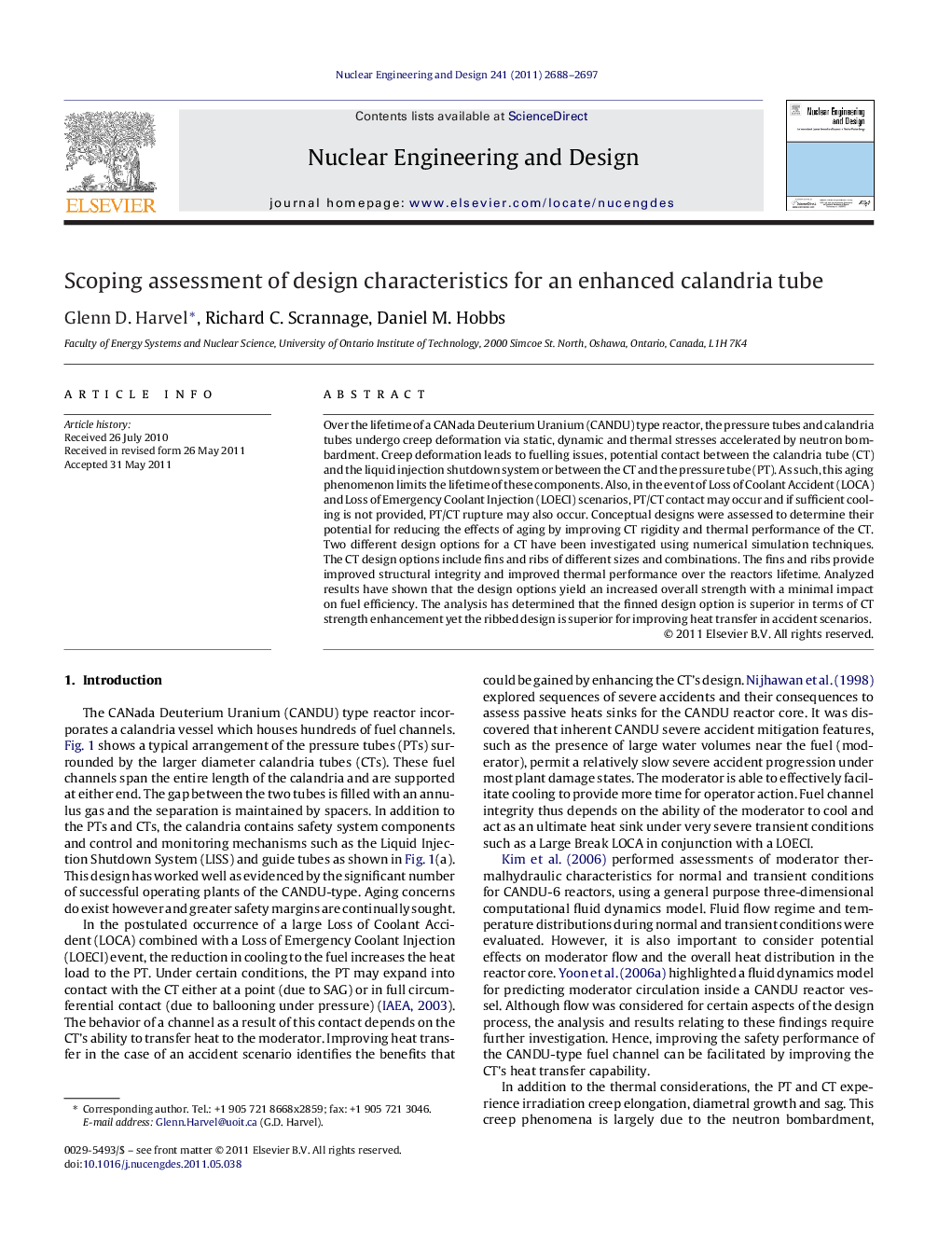| کد مقاله | کد نشریه | سال انتشار | مقاله انگلیسی | نسخه تمام متن |
|---|---|---|---|---|
| 297383 | 511756 | 2011 | 10 صفحه PDF | دانلود رایگان |

Over the lifetime of a CANada Deuterium Uranium (CANDU) type reactor, the pressure tubes and calandria tubes undergo creep deformation via static, dynamic and thermal stresses accelerated by neutron bombardment. Creep deformation leads to fuelling issues, potential contact between the calandria tube (CT) and the liquid injection shutdown system or between the CT and the pressure tube (PT). As such, this aging phenomenon limits the lifetime of these components. Also, in the event of Loss of Coolant Accident (LOCA) and Loss of Emergency Coolant Injection (LOECI) scenarios, PT/CT contact may occur and if sufficient cooling is not provided, PT/CT rupture may also occur. Conceptual designs were assessed to determine their potential for reducing the effects of aging by improving CT rigidity and thermal performance of the CT. Two different design options for a CT have been investigated using numerical simulation techniques. The CT design options include fins and ribs of different sizes and combinations. The fins and ribs provide improved structural integrity and improved thermal performance over the reactors lifetime. Analyzed results have shown that the design options yield an increased overall strength with a minimal impact on fuel efficiency. The analysis has determined that the finned design option is superior in terms of CT strength enhancement yet the ribbed design is superior for improving heat transfer in accident scenarios.
► Both a finned tube and a spiral ribbed tube design showed improved design performance relative to the current bare tube.
► The addition of longitudinal fins has the potential to increase the effective heat transfer surface area by a factor of 1.35.
► The addition of ribs has the potential to increase the effective heat transfer surface area by a factor of 11.
► The addition of longitudinal fins or ribs has the potential to decrease the natural displacement and the bending stress applied to the CT.
► The ribbed design option appears to provide better structural integrity than the finned design option.
► Both designs do not have a significant first order effect on the neutronics although further investigation is required to confirm.
Journal: Nuclear Engineering and Design - Volume 241, Issue 8, August 2011, Pages 2688–2697